This article was originally published in the November/December 2022 Issue of the WatchTime print magazine.
The angular Tetra sets a striking tone with four new limited-edition models. Each bright facade houses sound, traditional craftsmanship from the Glashütte manufacture. Our test shows how it all fits together.
Colorful versions of the unusual, square Nomos Tetra watch have been on the scene for a while now. Earlier renditions had more delicate nuances, and most came equipped with the hand-wound Alpha caliber, like the Immortal Beloved with its turquoise dial or the Divine Spark with its copper dial. The Grenadine clearly drew inspiration from the pomegranate, and the Matcha from mint tea. Now Nomos Glashütte has left understatement behind. Its four new Tetra models are thin, elegant and equipped with the DUW 3001 caliber, automatic, and presented in superbright colors. Here, colors are applied to the base material in a way that reflects light hitting the surface. This special technique creates a glossy effect that is similar to enamel.
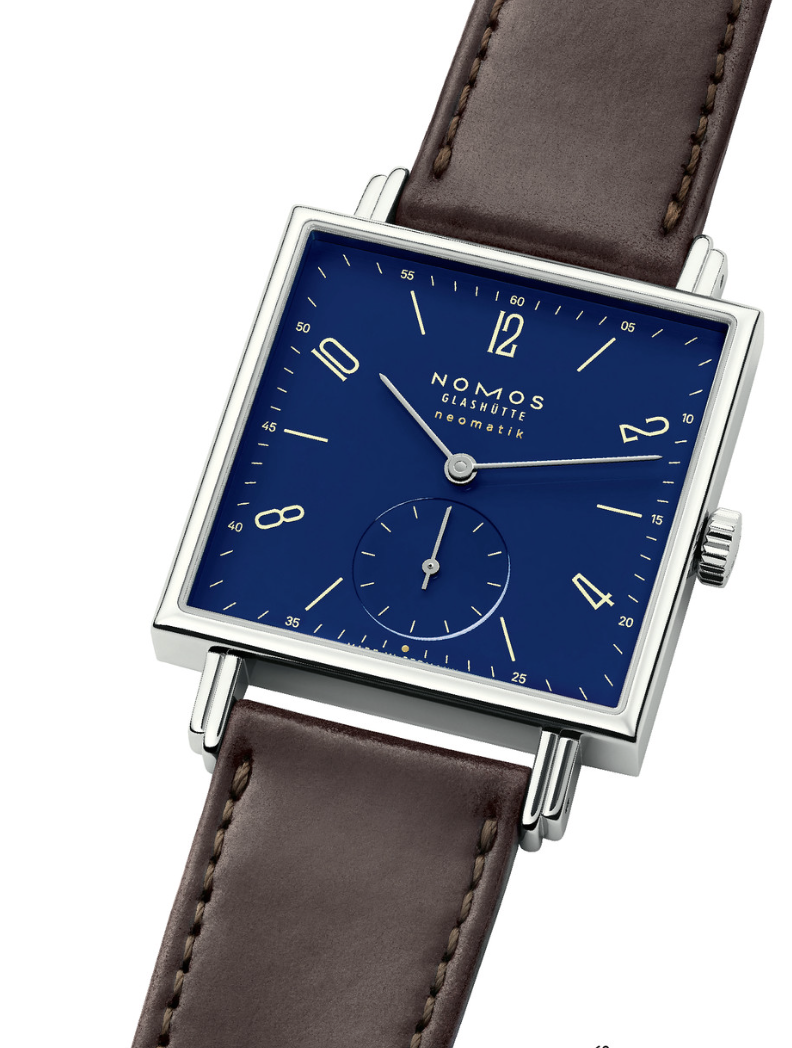
The result is intense color of incredible depth and clarity. The striking, light beige Nomos type has a different effect on each dial color, with a yellowish tone on the red dial but appearing almost white on the blue one. The off-white dial is the exception. Here, the numerals, indexes and scales are printed in blue. The thin steel-like hands are like all the other models, except for the small seconds hand, which is red. The red hand also makes an appearance on the black dial — because, why not?
“These watches make a bolder statement than wearing sneakers with a sport coat,” says head of product management at Nomos, Heike Ahrendt. “Whether you’re a businessman or an NFT artist, a political up-and-comer or a YouTube star, a molecular research scientist or an interior designer, with these watches, Nomos Glashütte was thinking about confident, modern people who don’t follow the mainstream. In shape and size, they are neither masculine nor feminine; they are for everyone.”

Well, that’s certainly simply put and contemporary. The fact that the Tetra measures 33 mm along the case edge does not reveal its true size. This angular relative to the Tangente measures 46 mm across the diagonal, so it’s clearly not small. The Tetra’s elegance comes from the narrow frame of the two-part case, with its slender height of only 7.45 mm, combined with the small crown and fine, tiered lugs. A frictionfit sapphire crystal viewing window in the caseback is splash proof and pressure resistant to 3 bar.
Behind the exciting, colorful, angular façade, the Tetra is respectable and down to earth, maybe even a bit conservative. Nomos Glashütte leaves nothing to be desired, and with the automatic Caliber DUW 3001, underscores its longestablished, in-house, “Made in Germany” expertise. And with the proprietary Nomos swing system, which became a part of this movement in 2015, the company finally gained independence from Swiss suppliers. Nomos’s own balance wheel, with a Carl Haas tempered blue hairspring, oscillates beneath a sturdy bridge at a rate of 3 Hz. The three-quarter plate of the DUW 3001 (typical in Glashütte watchmaking) obscures the gear train as well as the ratchet wheel and double click wheel for the self-winding mechanism. This complex and efficient system converts the bidirectional motion of the rotor into a single-sided winding of the mainspring and creates a power reserve of up to 43 hours.

A look through the round sapphire crystal window in the square Tetra friction-fit caseback reveals signature Glashütte decorations, such as Nomos perlage on the mainplate, Glashütte ribbing on the bridges and the skeletonized rotor, tempered blue screws, and gold-enhanced engraving — including the individual movement registration number on every Nomos caliber. DUW stands for “NOMOS Glashütte Deutsche Uhrenwerke” and the manufacture spells this out in capital letters on the rotor of the DUW 3001 movement, which is adjusted in compliance with the chronometer standard.
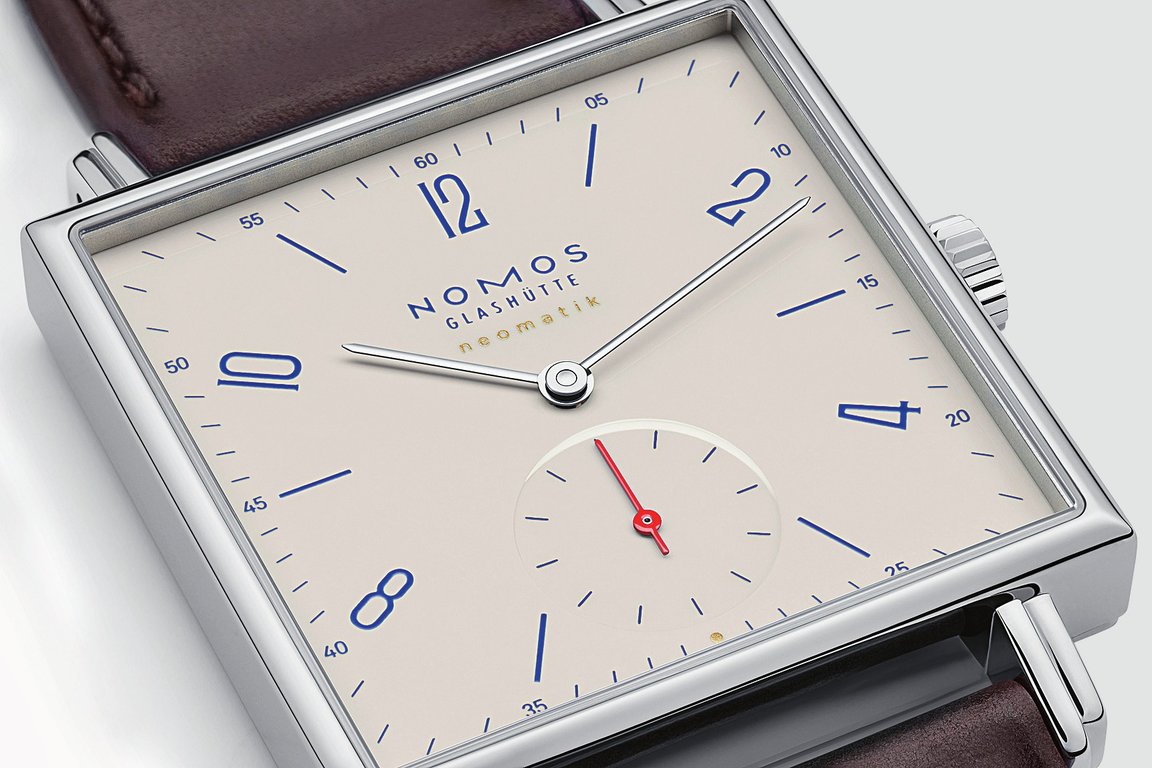
One question remained unanswered: Is it the square cases that house the thin, round automatic movements or is it the striking dials that cause each movement to tick a little bit differently? All rate results remained consistently within the self-imposed chronometer standards, even when we saw fluctuations into the minus range and sometimes close to the border area. For example, the DUW 3001 in the red Tetra gained 5.9 seconds when fully wound, while the movement in the black version lost 2.1 seconds. And after 24 hours of running time without additional winding, the same movement was running in the plus range with a daily gain of 2.8 seconds. The red Tetra proved itself in daily wear with a gain of 5.3 seconds on the wrist, while the black version had a minor deviation of only 1 second when worn.

Nomos is releasing the Tetra Neomatik – 175 Years Watchmaking Glashütte in a limited edition of only 175 pieces of each version (noted by the engraved number on each caseback) and has announced that each watch comes with a gift— a Nomos folding clasp is available at no additional cost, which fits on the highly polished, hand-oiled remborded strap made of Horween Genuine Shell Cordovan. However, we noted that threading the pin of the clasp into the solid leather strap may scratch the horse leather. Also, the loop of the clasp is not fixed in place and can slip over the simple folding clasp. It’s not a terrible thing, of course, but it can be a bit annoying if you’re putting the watch on in a hurry.

The leather for the strap is from a small area on the horse’s back, which cannot be reached by the horse’s teeth or tail. It is particularly thick and durable, so it takes a while for the strap to soften when worn — just as it may take some time to confidently wear a bright red or an intense blue watch in public. It’s certainly not for everyone.
To learn more about Nomos Glashütte, click here, and to subscribe to the WatchTime print magazine, click here.

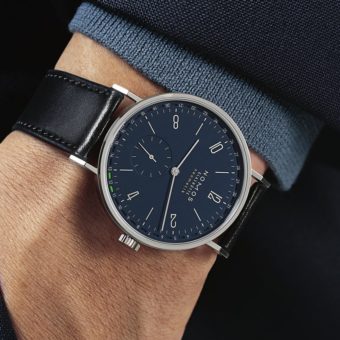


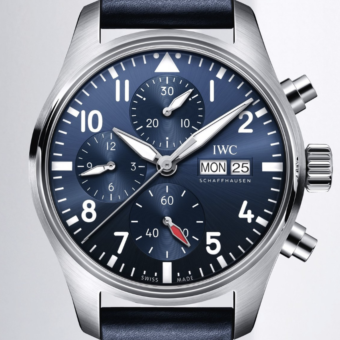
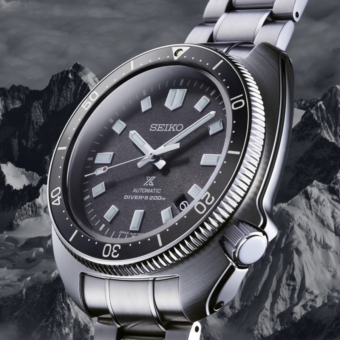
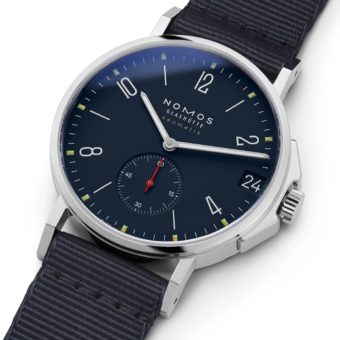
Can they make the hands skinnier?